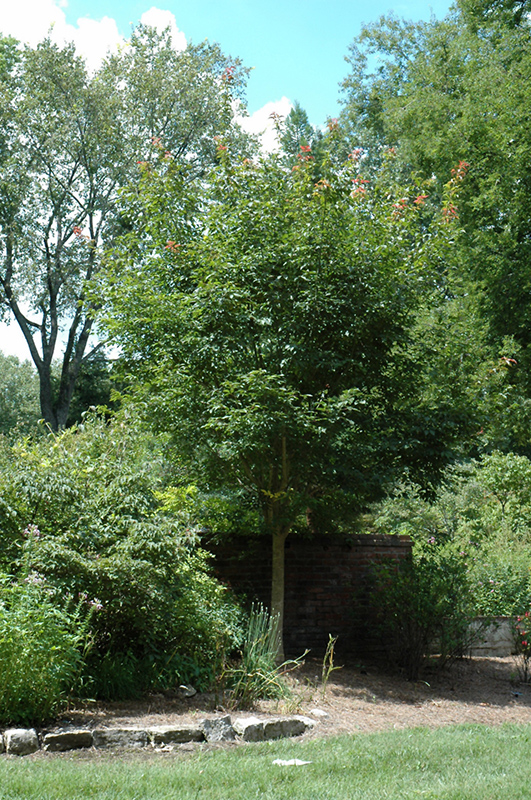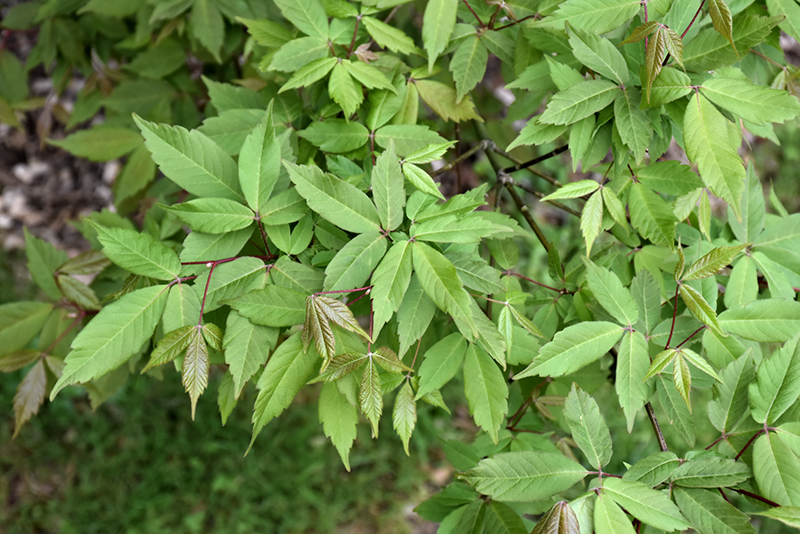Plant Finder
Height: 30 feet
Spread: 25 feet
Sunlight:
![]()
![]()
Hardiness Zone: 4
Other Names: Trifoliate Maple, Trefoil Maple
Description:
A lovely and rare maple that has compound elliptic, bluish green leaves that are thin and papery; bronze color in the spring and red in the fall; likes sun but not long periods of dry conditions; an excellent shade tree
Ornamental Features
Henry's Maple is primarily valued in the landscape for its ornamental upright and spreading habit of growth. It has dark green foliage with white undersides which emerges coppery-bronze in spring. The large serrated oval compound leaves turn outstanding shades of red and yellow in the fall. The smooth olive green bark is extremely showy and adds significant winter interest.
Landscape Attributes
Henry's Maple is a deciduous tree with an upright spreading habit of growth. Its average texture blends into the landscape, but can be balanced by one or two finer or coarser trees or shrubs for an effective composition.
This is a relatively low maintenance tree, and should only be pruned in summer after the leaves have fully developed, as it may 'bleed' sap if pruned in late winter or early spring. It is a good choice for attracting birds and squirrels to your yard. It has no significant negative characteristics.
Henry's Maple is recommended for the following landscape applications;
- Accent
- Shade
Planting & Growing
Henry's Maple will grow to be about 30 feet tall at maturity, with a spread of 25 feet. It has a low canopy with a typical clearance of 5 feet from the ground, and should not be planted underneath power lines. It grows at a medium rate, and under ideal conditions can be expected to live for 80 years or more.
This tree does best in full sun to partial shade. It prefers to grow in average to moist conditions, and shouldn't be allowed to dry out. It is not particular as to soil pH, but grows best in rich soils. It is somewhat tolerant of urban pollution, and will benefit from being planted in a relatively sheltered location. Consider applying a thick mulch around the root zone in winter to protect it in exposed locations or colder microclimates. This species is not originally from North America.
Disclaimer - Rutgers Landscape & Nursery Plant Finder is an online resource representing many of the varieties that we carry over the course of the season, and is intended for informational purposes only. Inventory varies seasonally, so we cannot guarantee that every plant will be in stock at all times - please contact Rutgers directly for current availability.


